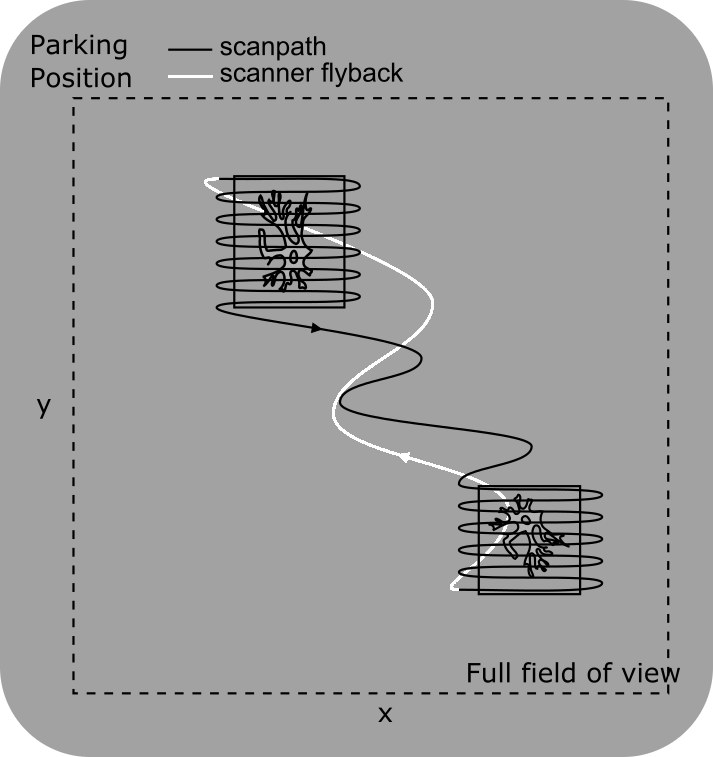Scanner Configurations
Scanner Configurations
To point the laser at a defined point in the imaging plane, a minimum of two serial mirrors (x and y axis) are needed within the microscope’s optical path. If one of the mirrors is a resonant mirror, limitations apply: While the position of the mirror can be estimated from its initial position and its resonant frequency, the position cannot be actively controlled. To actively control the scan path in the resonant mirror’s axis, an additional galvanometric mirror is needed.
ScanImage® supports the following mirror configurations:
Resonant mirror X, Galvanometric mirror X, Galvanometric mirror Y (RGG)
Resonant mirror X, Galvanometric mirror Y (RG)
Galvanometric mirror Galvanometric mirror Y (GG)

Scanner Configurations
Note
It is common that we abbreviate galvanometric mirror to “galvo”. It will henceforth be referred to by its abbreviation.
Resonant Galvo Galvo
Since the resonant mirror is limited to move in the x direction, no scanfield rotation can be achieved. The rotation angle of scanfields of type ‘Rotated Rectangle’ are forced to zero.
Because of its long settling time, the amplitude of the resonant scanner needs to stay constant during an active acquisition. Therefore, all scanfields need to have the same width and number of pixels per line.

Resonant Galvo Galvo
Resonant Galvo
Since no independent mirror is available to shift the scanfields in x, the scanfields are forced to be centered around the x axis.
Since the resonant mirror is limited to move in the x direction, no scanfield rotation can be achieved. The rotation angle of scanfields of type ‘Rotated Rectangle’ are forced to zero.
Because of its long settling time, the amplitude of the resonant scanner needs to stay constant during an active acquisition. Therefore, all scanfields need to have the same width and number of pixels per line.

Resonant Galvo
Galvo Galvo
The frame rate is limited by the performance of the galvanometric mirror in the x-axis.

Galvo Galvo